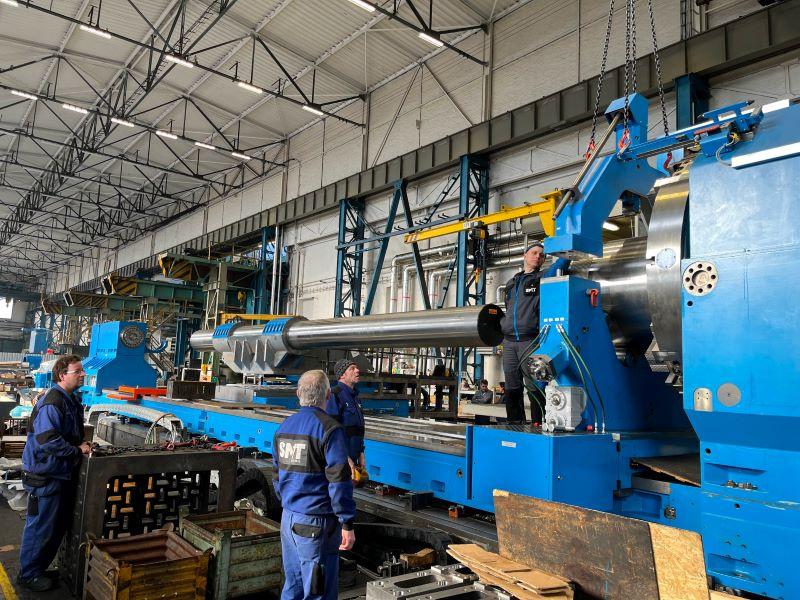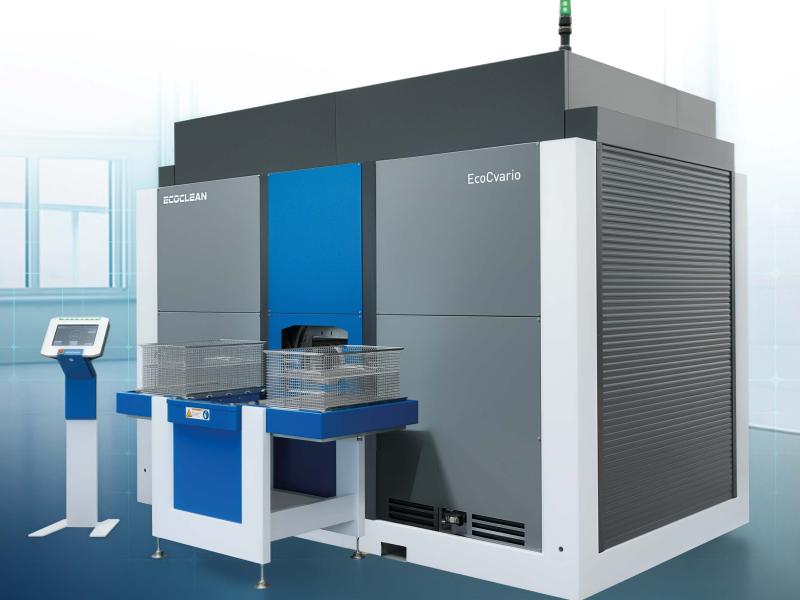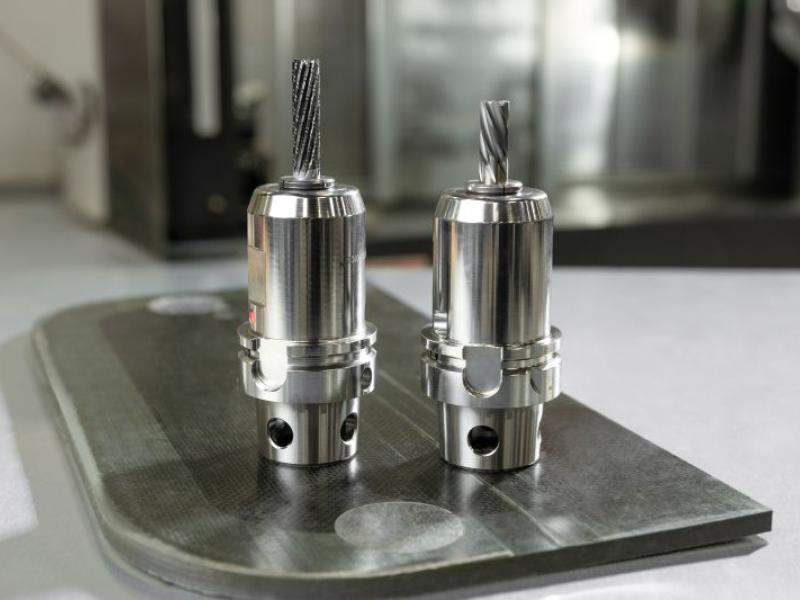Sandvik Coromant has etched its name in history as an innovator in precision engineering, by developing the world's largest boring bar. Measuring almost 11,000 mm (11 m) in length and 600 mm in diameter, this engineering behemoth has been developed specifically to meet the machining requirements of Häkkinen Group Jyväskylä unit, a Finnish engineering company.
The gargantuan lathe tool is going to be used to produce precise metal components for a range of sectors including offshore oil and gas, power transmission and renewable energy.
When it initially approached Sandvik Coromant, Häkkinen Group Jyväskylä unit had an unusual set of specifications. It needed a tool capable of machining a specific type of component with critical dimensions. Although the type of component was not specified — due to confidentiality agreements — it was especially large, measuring 800 mm in diameter by 12,000 mm (12 m) in length, and would be machined from both sides.
The required tool was a boring bar, used in machining operations to enlarge and refine the diameter of an existing hole in a workpiece. The holes made by a boring bar are more precise, accurate and smooth than those made by drilling, which may produce rougher holes.
However, the diameter and length of a boring bar is determined by the dimensions of the workpiece itself. It is recommended to select the largest possible bar diameter for an application to achieve the best possible stability. Put simply, the application required a boring bar of unprecedented dimensions. The large size would be essential to enable deep and precise internal turning operations, a task beyond the capability of standard-sized bars.
Reducing vibrations
Häkkinen Group Jyväskylä unit approached its partner ŠMT — formerly Skoda Machine Tool — based in the Czech Rublic, one of the world’s leading producers of high-precision horizontal boring and milling machines, horizontal lathes and more. It was clear that ŠMT would need to enlist the services of a machine tooling specialist that could supply a boring bar with the extraordinary dimensions needed to accommodate the demands of such a unique project.
To this end, ŠMT turned to Sandvik Coromant CZ, also based in the Czech Republic, to ask if it could support with the development of the huge bar.
“Sandvik Coromant is renowned as a producer of boring bars, particularly bars with anti-vibrational qualities,” explains Vaclav Faber, Project Engineer at Sandvik Coromant CZ. “Reducing vibrations in a boring bar is crucial because it ensures precision and surface finish quality in machining operations.”
Excessive vibrations can lead to inaccuracies, tool wear and compromised workpiece integrity — which were concerns given the huge scale of Häkkinen Group Jyväskylä unit’s machining operation. Instead, by minimising vibrations, the boring bar maintains stable and controlled cutting conditions, which results in higher productivity, extended tool life and superior surface finishes.
ŠMT had other stringent requirements for the bar: its customer, Häkkinen Group Jyväskylä unit, needed a tool that would integrate seamlessly with its existing machinery while pushing the boundaries of turning operations. It was also essential that the new bar be compatible for use in ŠMT’s huge lathe.
Step forward Sandvik Teeness in Trondheim, Norway. The team was chosen for its reputation as a market leader in the in the development and production of boring bars that goes back to the 1960s.
Challenges
The bar is made of steel and contains a component called a "damper" made of heavy metal. A damper is a device used to reduce or absorb vibrations, rarely found in machinery or structures, and clamped in special rubber rings.
Another crucial feature of the bar is the Coromant Capto tool holder affixed to in front of the bar, which would hold the cutting inserts needed to machine the workpiece. The Coromant Capto® is designed to reduce set-up and tool change times for significantly increased machine utilisation, and to support stable and reliable machining.
“The tool holder has proven especially useful in multi-task machines,” says Faber. “It enables assembling of tools with different lengths and design characteristics regardless of the machine interface. The Coromant Capto also meets Häkkinen Group Jyväskylä unit’s requirement for a boring bar that can be useable in a diverse range of industrial setups.”
Extensive tests
Sandvik Teeness’ specialists conducted crucial frequency measurements on-site to assess the effectiveness of the dampening adapter integrated within the bar. The bar was put to work in a large CNC lathe and tested multiple times in three applications — roughing, finishing and profiling — each time with different cutting data.
The tool was run with a maximum allowed overhang of 10-times the diameter (10 x D), recommended to minimise vibrations and obtain the best possible stability and accuracy. Sandvik Coromant’s Silent ToolsM boring bars, so-called because they operate with minimal vibrations, are in general used at long tool overhangs and a rigid clamping is very important. Cylindrical boring bars should always be clamped in split sleeve holder with a minimum clamping length of 4 x bar diameter.
The cutting data was based on initial recommendations generated by the CoroPlus Tool Guide software platform, which were amended during the tests. For the roughing application, the bar was run every time with a cutting speed (vc) of 100 m/min and feed-per-revolution (fn) of 0.4 mm/rev. The load on a boring bar is mainly dependent on the depth of cut (ap), the feed and the workpiece material. It is essential to ensure a sufficient ap and fn to avoid vibration during cutting. An ap and fn which is too high can cause vibration through tool deflection.
For these reasons, the ap was adjusted for testing purposes. The boring bar showed signed of vibration at an ap of 5.6 mm and limited performance at 4.5 mm but, in the end, 3.5 mm was found to be the recommended depth of cut.
In the finishing and also profile applications, the bar was run at a vc of 110 m/min and ap of 0.5 mm ever time. The fn was adjusted, and 0.25 was found to be the optimal and recommended setting, giving a roughness average (Ra) of 3.4.
“Based on the test results, Sandvik Coromant’s specialists were able to recommend cutting data parameters and inserts to ŠMT,” explains Faber.
Jaroslav Šuga, Global Account Manager at Sandvik Slovakia adds, “There were regular meetings with the Sandvik Teeness production team about the bar’s delivery time and all details concerning manipulation, transport and logistics. Success was possible because we worked together with ŠMT’s designers, technologists, the production team in Norway and all people involved in the sales process.
Further investment
Sandvik Coromant has developed a boring bar that’s not only remarkable for its size, but is also an invaluable asset for Häkkinen Group Jyväskylä unit, in whose workshop it is now being used to precision machine components for diverse sectors. Going forward, and impressed by the world’s largest boring bar, ŠMT plans to invest in further — albeit slightly smaller — boring bars from Sandvik Coromant for the machining of slightly smaller components.
“The world’s largest boring bar remains testament to Sandvik Coromant's unwavering commitment to innovation and precision and machining applications,” says Faber.
To learn more about Sandvik Coromant’s Silent ToolsTM boring bars, visit its website.






